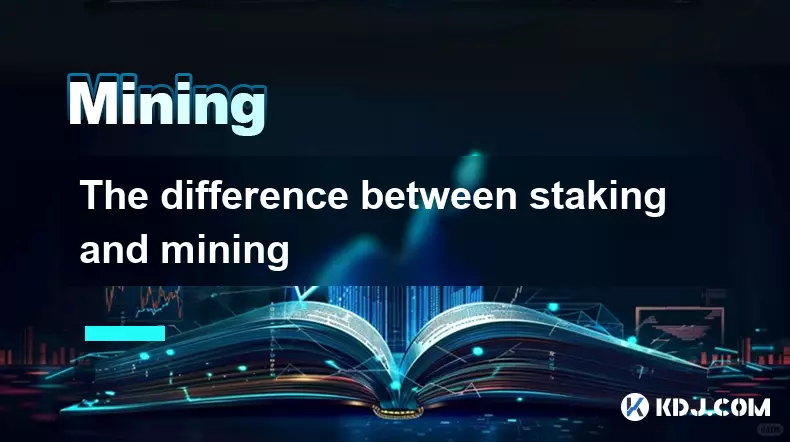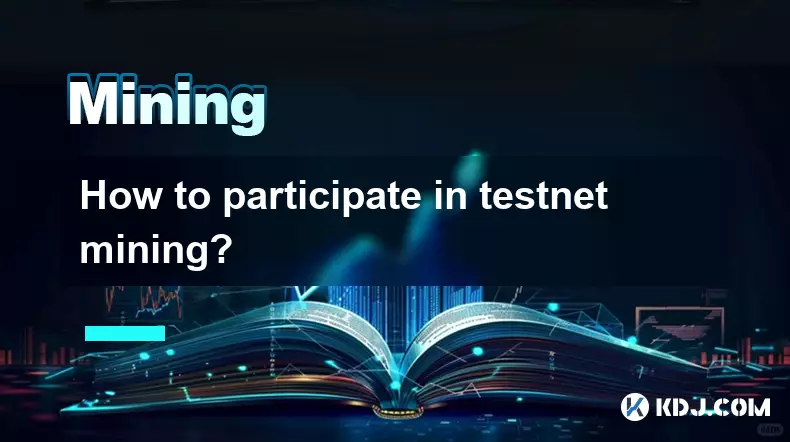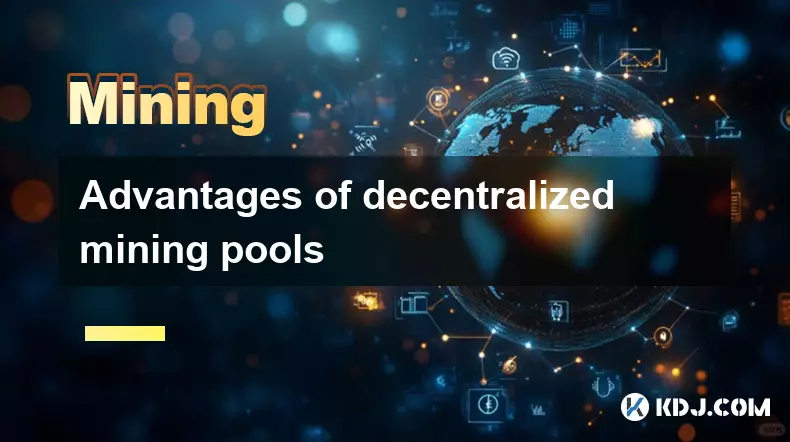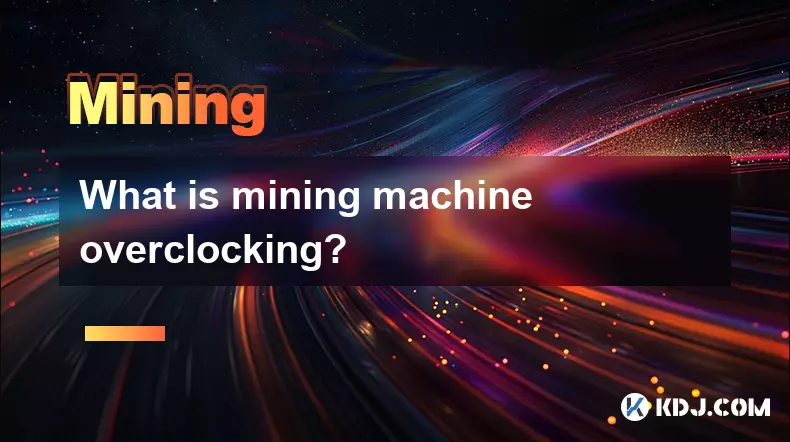-
 bitcoin
bitcoin $114320.977035 USD
-0.40% -
 ethereum
ethereum $4152.439985 USD
-1.75% -
 tether
tether $1.000111 USD
-0.04% -
 xrp
xrp $2.843037 USD
-1.63% -
 bnb
bnb $1013.349380 USD
-1.62% -
 solana
solana $208.362767 USD
-2.10% -
 usd-coin
usd-coin $0.999783 USD
0.00% -
 dogecoin
dogecoin $0.232559 USD
-1.00% -
 tron
tron $0.333491 USD
-1.09% -
 cardano
cardano $0.806310 USD
0.19% -
 hyperliquid
hyperliquid $45.023720 USD
-1.59% -
 ethena-usde
ethena-usde $1.000819 USD
-0.06% -
 chainlink
chainlink $21.241249 USD
-2.11% -
 avalanche
avalanche $30.035416 USD
-0.66% -
 stellar
stellar $0.364984 USD
-2.05%
How to use an old computer for cryptocurrency mining?
Mining crypto on an old computer is possible with CPU-friendly coins like Monero, but check hardware limits, power costs, and profitability first.
Aug 07, 2025 at 12:42 pm

Understanding the Feasibility of Using an Old Computer for Mining
Using an old computer for cryptocurrency mining may seem outdated, but it is still technically possible under specific conditions. The primary factor determining success is the hardware's ability to perform hash calculations efficiently. Most older computers lack modern GPUs or powerful CPUs, which are essential for competitive mining. However, certain low-difficulty or CPU-minable cryptocurrencies can still be mined with older systems. It’s crucial to assess whether the energy consumption outweighs potential earnings. Electricity costs can easily surpass the value of mined coins if the hardware is inefficient. Therefore, before proceeding, verify whether your old machine meets minimum computational thresholds and evaluate the cost-benefit ratio.
Choosing the Right Cryptocurrency to Mine
Not all cryptocurrencies are suitable for mining on outdated hardware. Proof-of-Work (PoW) coins that rely heavily on GPU power, such as Bitcoin or Ethereum, are no longer viable on older machines due to network difficulty and competition from ASIC miners. However, some alternatives remain accessible:
- Monero (XMR) supports CPU mining and is designed to resist ASIC dominance, making it ideal for older systems.
- Ravencoin (RVN) and Ergo (ERG) allow GPU mining with older graphics cards, though profitability varies.
- Feathercoin (FTC) and Vertcoin (VTC) are lightweight PoW coins that can be mined with legacy hardware.
Research the current network difficulty and block rewards for each coin. Use online calculators like WhatToMine or CryptoCompare to estimate potential returns based on your system’s hash rate and power draw.
Assessing Your Old Computer’s Hardware Capabilities
Before installing mining software, conduct a thorough hardware evaluation. The following components determine mining viability:
- CPU: Look for multi-core processors with high clock speeds. Intel Core i3/i5 from the 3rd generation or AMD equivalents may still offer marginal performance. Check if your CPU supports AES-NI instruction sets, which are required for efficient Monero mining.
- GPU: Older GPUs such as the NVIDIA GTX 750 Ti or AMD Radeon HD 7950 can mine certain altcoins. Verify VRAM size (at least 2GB recommended) and driver support.
- RAM: Mining software typically requires 4GB or more of RAM. Upgrade if your system has less.
- Power Supply: Ensure your PSU can handle sustained load. Mining increases power draw, and an unstable supply may damage components.
- Cooling: Older systems may lack adequate cooling. Monitor temperatures using tools like HWMonitor or Core Temp to prevent overheating.
Run benchmark tests using tools like CPU-Z, GPU-Z, or AIDA64 to determine real-world performance metrics.
Installing and Configuring Mining Software
Once you’ve selected a suitable cryptocurrency, install compatible mining software. For CPU-based mining:
- Download XMRig, an open-source miner optimized for Monero.
- Extract the ZIP file to a dedicated folder (e.g., C:\XMRig).
- Edit the config.json file using a text editor to input your wallet address, pool URL, and worker name.
- Example pool configuration for Monero:
- Pool:
pool.supportxmr.com:3333 - Wallet Address:
44t…your_monero_wallet_key - Rig Name:
OldPC_Miner
- Pool:
For GPU mining:
- Use T-Rex Miner or PhoenixMiner for NVIDIA/AMD cards.
- Install the latest GPU drivers compatible with your card model.
- Create a batch file (.bat) to automate startup with optimal settings:
t-rex.exe -a kawpow -o stratum+tcp://rvn.flypool.org:3333 -u YOUR_RVN_ADDRESS -p x --pl 70This command mines Ravencoin at 70% power limit to reduce heat.
Ensure Windows Defender or other antivirus software does not block the miner, as some flag mining tools as malware.
Connecting to a Mining Pool and Wallet Setup
Solo mining with an old computer is impractical due to low hash rates. Joining a mining pool increases the chance of earning consistent rewards. Steps to connect:
- Register on a reputable pool such as SupportXMR, Flypool, or 2Miners.
- Create a cryptocurrency wallet to receive payouts. For Monero, use the official Monero GUI Wallet or MyMonero. For Ravencoin, use Electrum-RVN or Exodus.
- Configure the miner to point to the pool’s server address and port.
- Enter your wallet address as the username and a worker name (e.g.,
OldPC.Worker1) as the password. - Enable email notifications on the pool dashboard to monitor hashrate and detect downtime.
Payouts are typically automatic once a threshold (e.g., 0.1 XMR) is reached. Some pools allow lower thresholds for a fee.
Monitoring Performance and Managing System Stability
After launching the miner, continuous monitoring is essential to maintain efficiency and prevent hardware failure. Use the following practices:
- Keep the command-line miner window open to view real-time hash rate, accepted shares, and rejected shares.
- Install MSI Afterburner to monitor GPU temperature and adjust fan speed if overheating occurs.
- Limit CPU usage via Task Manager to prevent system lag if using the computer for other tasks.
- Schedule mining during off-peak electricity hours if your utility provider charges variable rates.
- Defragment the hard drive and disable unnecessary background processes to free up RAM.
Older systems may throttle performance due to thermal limits. If temperatures exceed 85°C, reduce intensity settings in the miner configuration or add external cooling.
Frequently Asked Questions
Can I mine Bitcoin with an old computer?No, Bitcoin mining requires specialized ASIC hardware. The network difficulty is too high for CPUs or GPUs in old computers to generate meaningful rewards. Attempting to mine Bitcoin on such systems will result in negligible output and high electricity costs.
Is it safe to run an old computer 24/7 for mining?Continuous operation can shorten the lifespan of aging components. Ensure proper ventilation, clean dust from fans and heatsinks, and monitor temperatures. Systems older than 8–10 years may have degraded capacitors or failing power supplies, increasing the risk of sudden failure.
Do I need a dedicated internet connection for mining?No, mining does not require high bandwidth. A stable connection with at least 1 Mbps upload speed is sufficient. However, frequent disconnections will result in rejected shares and reduced earnings.
Can I use a laptop for cryptocurrency mining instead of a desktop?Laptops are generally not recommended due to poor thermal design and limited upgradability. Overheating can cause throttling or permanent damage. If attempted, use on a hard, flat surface with cooling pads and limit mining intensity.
Disclaimer:info@kdj.com
The information provided is not trading advice. kdj.com does not assume any responsibility for any investments made based on the information provided in this article. Cryptocurrencies are highly volatile and it is highly recommended that you invest with caution after thorough research!
If you believe that the content used on this website infringes your copyright, please contact us immediately (info@kdj.com) and we will delete it promptly.
- BlockDAG, DOGE, HYPE Sponsorship: Crypto Trends Shaping 2025
- 2025-10-01 00:25:13
- Deutsche Börse and Circle: A StableCoin Adoption Powerhouse in Europe
- 2025-10-01 00:25:13
- BlockDAG's Presale Buzz: Is It the Crypto to Watch in October 2025?
- 2025-10-01 00:30:13
- Bitcoin, Crypto, and IQ: When Genius Meets Digital Gold?
- 2025-10-01 00:30:13
- Stablecoins, American Innovation, and Wallet Tokens: The Next Frontier
- 2025-10-01 00:35:12
- NBU, Coins, and Crypto in Ukraine: A New Yorker's Take
- 2025-10-01 00:45:14
Related knowledge

The difference between staking and mining
Sep 24,2025 at 05:18am
Understanding Staking in the Cryptocurrency Ecosystem1. Staking involves holding funds in a cryptocurrency wallet to support the operations of a block...

How to participate in testnet mining?
Sep 22,2025 at 09:18am
Understanding Testnet Mining in the Crypto Ecosystem1. Testnet mining is a method used by blockchain developers to simulate real-world conditions on a...

How to dispose of abandoned mining machines?
Sep 19,2025 at 08:19pm
Assessing the Condition of Abandoned Mining Rigs1. Begin by inspecting each mining machine for visible damage, corrosion, or missing components. Machi...

How to identify high-quality mining pools?
Sep 21,2025 at 03:19pm
Reputation and Track Record1. A mining pool’s reputation is built over time through consistent performance and transparency. Pools that have operated ...

Advantages of decentralized mining pools
Sep 20,2025 at 04:36pm
Enhanced Security and Resistance to Censorship1. Decentralized mining pools operate on blockchain-based smart contracts, eliminating the need for a ce...

What is mining machine overclocking?
Sep 21,2025 at 07:19pm
Understanding Mining Machine Overclocking1. Mining machine overclocking refers to the process of increasing the operating frequency of a cryptocurrenc...

The difference between staking and mining
Sep 24,2025 at 05:18am
Understanding Staking in the Cryptocurrency Ecosystem1. Staking involves holding funds in a cryptocurrency wallet to support the operations of a block...

How to participate in testnet mining?
Sep 22,2025 at 09:18am
Understanding Testnet Mining in the Crypto Ecosystem1. Testnet mining is a method used by blockchain developers to simulate real-world conditions on a...

How to dispose of abandoned mining machines?
Sep 19,2025 at 08:19pm
Assessing the Condition of Abandoned Mining Rigs1. Begin by inspecting each mining machine for visible damage, corrosion, or missing components. Machi...

How to identify high-quality mining pools?
Sep 21,2025 at 03:19pm
Reputation and Track Record1. A mining pool’s reputation is built over time through consistent performance and transparency. Pools that have operated ...

Advantages of decentralized mining pools
Sep 20,2025 at 04:36pm
Enhanced Security and Resistance to Censorship1. Decentralized mining pools operate on blockchain-based smart contracts, eliminating the need for a ce...

What is mining machine overclocking?
Sep 21,2025 at 07:19pm
Understanding Mining Machine Overclocking1. Mining machine overclocking refers to the process of increasing the operating frequency of a cryptocurrenc...
See all articles










































































